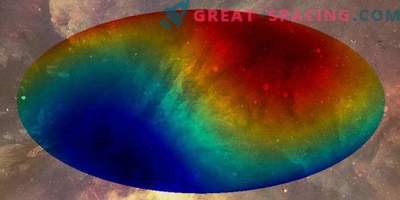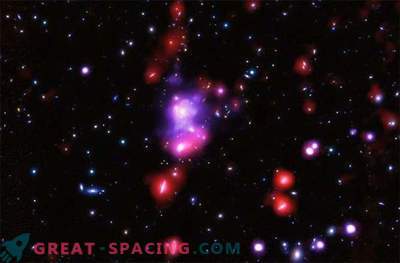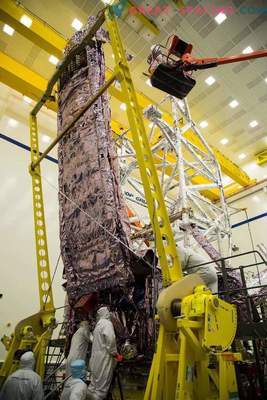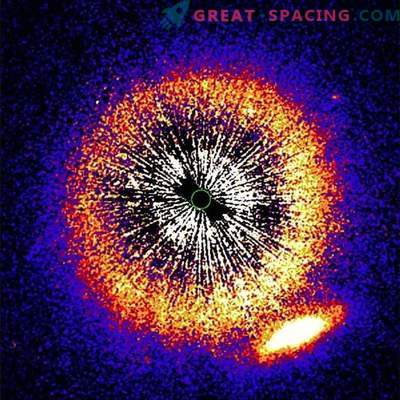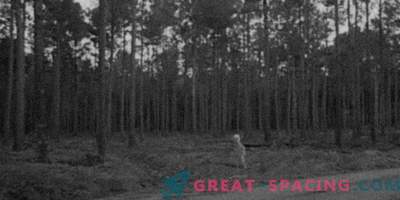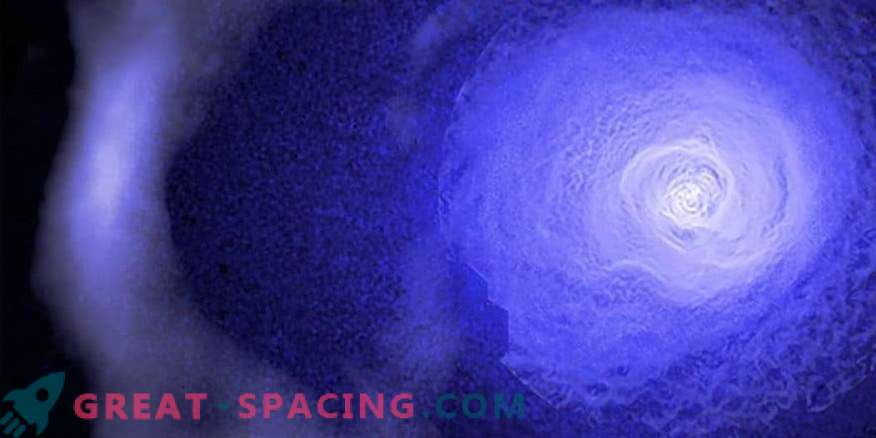
A large-scale and stable “cold front” rushes through Perseus clusters. Scientists use the Chandra X-ray Observatory to study this phenomenon. The space weather system extends over 2 million light years and moves 5 billion years longer than our system exists.
The graph shows a cold front in the Perseus cluster. Here used data Chandra, as well as telescopes XMM-Newton and ROSAT. The cold front is an elongated vertical structure on the left side of the frame. He managed to escape from the center of the cluster at a speed of 300,000 miles per hour.
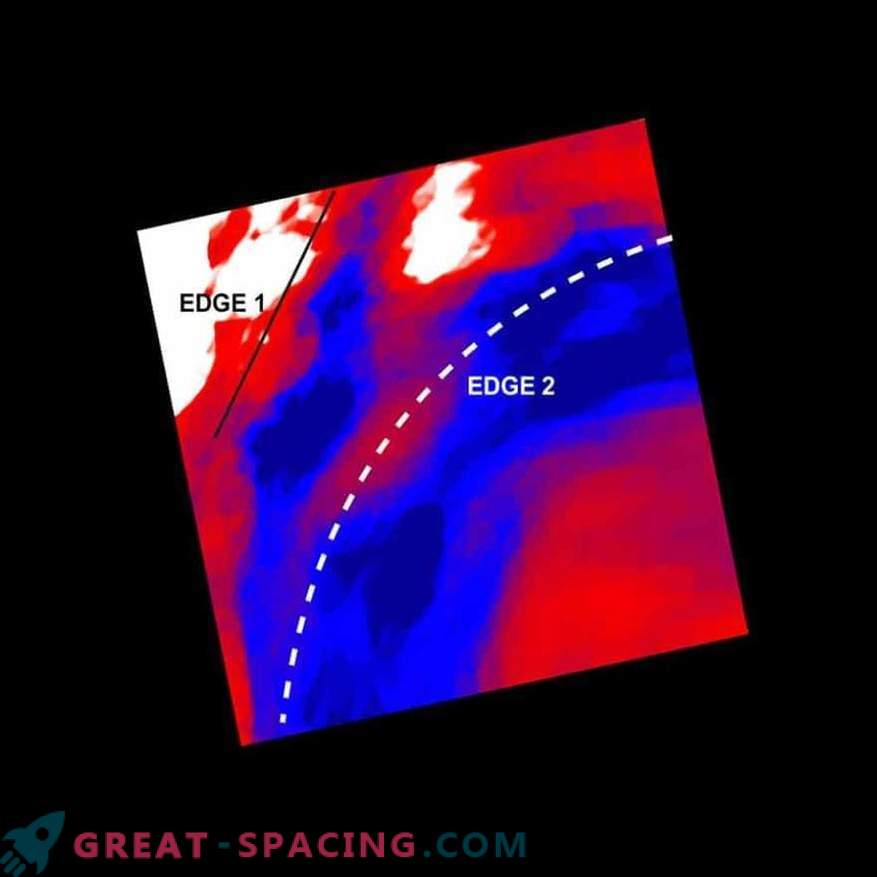
Top view on the cold front
The bottom inset shows a top view of the formation from Chandra. This is a temperature map, where blue is relatively cooler areas (30 million degrees), and red is hot (80 million degrees). The cold front not only managed to achieve 1/3 of the universe age, but also split into two different parts. Scientists believed that such an ancient formation with time should disappear, because it breaks through the harsh conditions of sound waves and turbulence for billions of years.
But the clarity of the cold front hints that the structure is preserved by powerful magnetic fields wrapped around it. While the cold fronts on Earth are moving along with the planetary rotation, the formation of galactic clusters in the atmospheres is created by their collision. These blows occur due to gravitational influence, where gas escapes from the nucleus. It stretches in an arc, like a jet, and creates a spiral pattern of cold fronts. Perseus Cold Front found in 2012.




